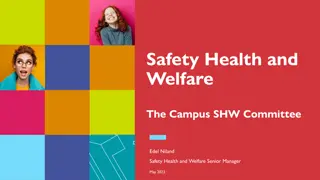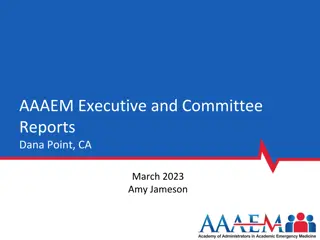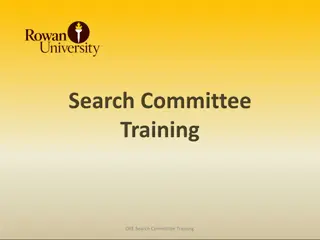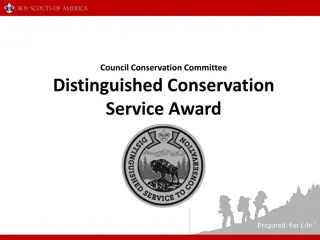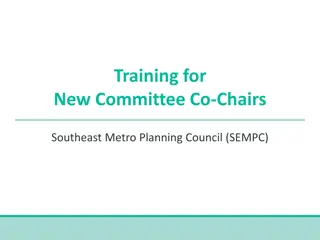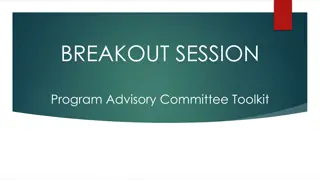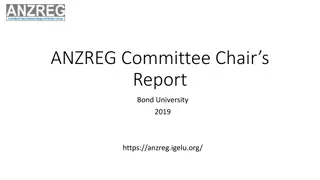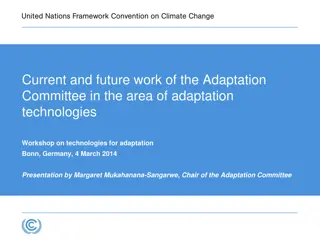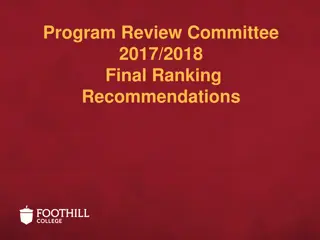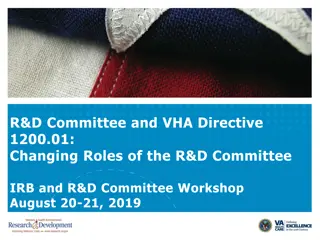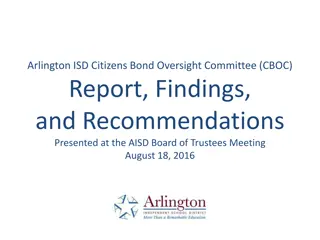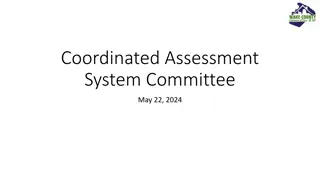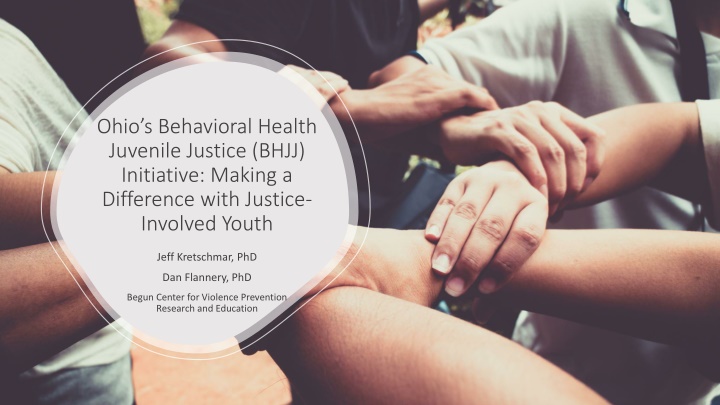
Ohio Behavioral Health Juvenile Justice Initiative Impact
"Learn about Ohio's Behavioral Health Juvenile Justice Initiative aimed at helping justice-involved youth with behavioral health needs through community-based treatment programs. Explore the program's success, outcomes, and implications for cost-effective and positive youth outcomes."
Download Presentation

Please find below an Image/Link to download the presentation.
The content on the website is provided AS IS for your information and personal use only. It may not be sold, licensed, or shared on other websites without obtaining consent from the author. If you encounter any issues during the download, it is possible that the publisher has removed the file from their server.
You are allowed to download the files provided on this website for personal or commercial use, subject to the condition that they are used lawfully. All files are the property of their respective owners.
The content on the website is provided AS IS for your information and personal use only. It may not be sold, licensed, or shared on other websites without obtaining consent from the author.
E N D
Presentation Transcript
Ohios Behavioral Health Juvenile Justice (BHJJ) Initiative: Making a Difference with Justice- Involved Youth Jeff Kretschmar, PhD Dan Flannery, PhD Begun Center for Violence Prevention Research and Education
Ohios Behavioral Health Juvenile Justice (BHJJ) Initiative Created to enhance judicial options for juvenile justice- involved youth with serious behavioral health needs Sponsored by the Ohio Departments of Mental Health and Addiction Services (OhioMHAS) and Youth Services (ODYS) Began in 1999 as a pilot, re-funded in 2005 Goal is to reduce the number of youth with behavioral health issues sent to ODYS and local juvenile justice facilities. In lieu of detention, appropriate youth are referred by the court to the BHJJ program for mental/behavioral health treatment. Youth are typically treated in the home or in outpatient settings (very rarely in more intensive inpatient facilities).
BHJJ Basics How does it work? Complementary Services Eligibility Process
Outcomes Since 2006, over 6,000 youth have been enrolled into BHJJ 65% male 54% non-white Average age at intake = 15.8 years Around 40% of the BHJJ caregivers reported household earnings less than $15,000
Youth and Family Characteristics Question Has the child ever been physically abused? Has the child ever been sexually abused? Has the child ever run away? Has the child ever had a problem with substance abuse, including alcohol and/or drugs? Females 17.3% 21.4%* 61.2%* 40.3% Males 13.0% 6.9% 43.6% 55.8%* Has the child ever talked about committing suicide? 53.6%* 35.0% Has the child ever attempted suicide? 23.0%* 10.9% Has the child ever been exposed to domestic violence or spousal abuse, of which the child was not the direct target? Has anyone in the child s biological family ever been diagnosed with depression or shown signs of depression? 39.0% 35.3% 65.5% 65.6% Has anyone in the child s biological family had a mental illness, other than depression? 56.2% 53.3% Has anyone in the child s biological family had a drinking or drug problem? 53.4% 47.2%
Implications of BHJJ Significant cost savings over detention Improved outcomes for youth without sacrificing public safety Expansion of evidence-based diversion programming in Ohio (Targeted RECLAIM, Competitive RECLAIM, expansion of specialty dockets, JDAI, assessment centers, etc.) Inclusion of evaluation component in programming From 2000 to 2023, Ohio went from: 9 youth prisons to 3 today ~2000 youth in prisons to 447 in JCFs as of Nov 23
Additional considerations Data driven decision making Some approaches do more harm than good (e.g. Scared Straight) Assess impacts and outcomes like behavior and mental health, not just recidivism Comprehensive intake/ assessment to determine potential trajectories (e.g. early onset, persistent) EB treatment while detained vs. transfer to adult prison Environment, culture and community matter (in DYS and out) Access to and lethality of firearms among youth Child and Adolescent Behavioral Health COE

